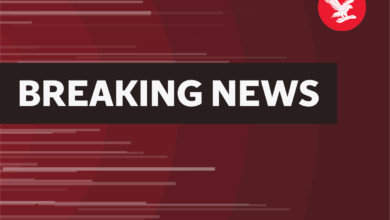Who are Yemen’s Houthis? The Iran-backed rebels attacking ships in the Red Sea

Tensions in the Middle East have risen after Iranian-backed Houthi rebels began striking at ships passing through the Red Sea in December.
Rishi Sunak held an emergency Cabinet call on Thursday evening amid mounting speculation that the UK and western allies could take action amid the continuing attacks.
The Islamist group claims it began striking a narrow strip of sea between Yemen and east Africa, which is a key international trade route, in a bid to end Israel’s air and ground offensive against Hamas.
But who are Yemen’s Houthi rebels? How are they linked to the conflict between Israel and Palestine, and why are they attacking western ships now?
“It’s clearly linked to a broader strategy of Iran, which is the main backer of the Houthis,” militant jihadist expert Dr Elisabeth Kendall told The Independent.
“It is designed to ramp up pressure on Israel, America and other allies to stop the war in Gaza. The Houthis are armed, sponsored and trained by Iran as part of the so-called axis of resistance,” Dr Kendall said.
The Houthis, formed in the late 1990s, developed as political-religious Shi’ite movement and launched a series of guerrilla wars against Yemen’s national army.
The group seized the country’s capital of Sana’a when the Yemen civil war started in 2014, which caused neighbouring Sunni Islam Saudi Arabia to intervene at the head of a western-backed coalition over fears of growing Shi’ite influence on its border. Since then, the civil war is estimated to have killed almost 400,000 people.
The takeover of the capital prompted Saudi Arabia to intervene in a bid to restore the internationally recognised government, which has a Sunni majority. A Saudi and UAE bombing campaign against Houthi targets was launched in 2015 and drew criticism over civilian deaths, leading to calls for the UK to cease arms exports to Saudi Arabia.
The Houthis have developed an arsenal including ballistic missiles and armed drones capable of hitting Israel more than 1,000 miles from Sana’a. The rebels have fired these missiles at Saudi Arabia dozens of times during the Yemen war. In September, the Houthis displayed anti-aircraft Barq-2 missiles, naval missiles, a Mig-29 fighter jet and helicopters for the first time.
Saudi Arabia and the US have accused Iran of “fully enabling” the rebel group to attack Israel and Western ships in the Red Sea. Iran denies the allegations, and says the Houthis are autonomous.
But experts say the Houthis, along with Gaza’s Hamas and Lebanon’s Hezbollah, form part of Iran’s “axis of resistance” -a military alliance built over four decades to oppose Israeli and American power in the Middle East.
The alliance comprises a group of violent proxies across Yemen, Syria, Iraq, Iran, Lebanon and Palestine, coordinated by Israel’s Quds Force, which is aimed at exporting Iran’s 1979 Islamic revolution abroad.
Lebanon’s Hezbollah, the most powerful group in the axis, boasts 100,000 fighters, has exchanged fire with Israeli forces since Hamas went to war with Israel and more than 70 of its fighters have been killed.
The US also says its troops in Syria and Iraq have been attacked at least 55 times by Iran-backed proxies since Hamas’s assault on Israel on 7 October.
The war has been viewed as a proxy in a wider conflict between Iran and Saudi Arabia as they both seek greater influence across the Middle East.
Houthi supporters rally to show support for Palestine in Sanaa, Yemen, on 7 October





